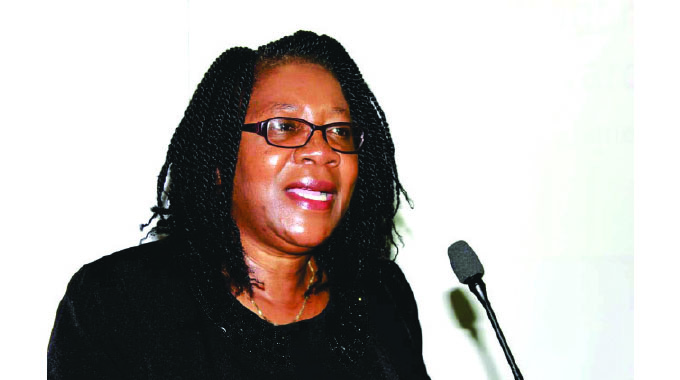RBZ to launch collateral registry

Nelson Gahadza–Senior Business Reporter
THE Reserve Bank of Zimbabwe (RBZ) says the collateral registry, a record keeping system for the existence of security, would be launched by the third quarter of this year.
The collateral registry, a publicly available database of interests or ownership of movable assets, will enable borrowers to prove their creditworthiness and potential lenders to determine a borrower’s credit suitability measured against their collateral.
The inventory of assets against which financial institutions may be able to lend to previously excluded groups would enhance financial inclusion, as espoused in the National Financial Inclusion Strategy.
Movable collateral that can be used as security includes equipment, inventory, accounts receivable, farm products, household items and bank accounts.
RBZ deputy director, bank supervision, Rachel Mushosho, during a panel discussion at the launch of the Sivio Institute survey report on the state of financial inclusion of Micro, Small and Medium Enterprises (MSMEs) in Zimbabwe said banks would be able to lend to SMEs banking on the registry.
“In most cases banks just want immovable properties as collateral, but as the RBZ, by the third quarter, the collateral registry will be launched and the SMEs will be able to use movable assets as collateral,” she said.
She noted that the process took long because it involved external licensing and required legislation to be passed through Parliament.
“So this should be launched to ensure SMES use the movable assets that they have and register to borrow money from banks using them as security.
“We have also come up with a credit registry.
Banks usually say SMEs are risky, youths are high risky, women are high risky, but if they have a reference point where they say they want to see credit history, they can be able to lend on that,” said Ms Mushosho.
The RBZ is currently working on a second National Financial Inclusion Strategy (NFIS2), which would run from 2022 to 2026 with special focus on the country’s most vulnerable groups.
The central bank has identified under both NFIS I (2016-2020) and the forthcoming NFIS II (2022-2026), SMEs, youths and women as target groups that are currently financially excluded.
According to the Sivio survey, about 56 percent of MSMEs are financially excluded from the formal financial system largely due to issues related to compliance with registration and lack of financial products for the sector.
Ms Mushosho said according to the RBZ quarterly loan disbursement indicators, of the total banking sector loans of $300 billion issued as at March 31, 2022, SMES only accessed 3,9 percent of the total amount disbursed.
“So we are not lost to the fact that usage is very low. That is why we are coming up with strategies to ensure that the products speak to their needs so that they can continuously use them,” she said.
She said the NSFI1 focused on financial access and the numbers had increased but little happened beyond opening of accounts. “Under NFSI2 we intend to look at usage of formal financial services.
“We are looking at the quality of those financial services because it cannot be one size fits all. We are collaborating with different stakeholders and financial players, to say can you come up with tailor made products,” she noted.
The Sivio Institute, in its survey report, said small and medium enterprises in Zimbabwe were struggling to register their businesses while the registration process was complicated.
Tendai Murisa, Sivio executive director, said at the launch that the national average for MSMEs on financial inclusion was at 44 percent.
“However, there are other regions that are lower than the national average such as Midlands, Masvingo and Harare that are close to the average.
“Provinces that are doing well are Matabeleland South and Mashonaland West are above national average.
“But there is no one in the 70 percent with all hovering around 50 percent,” he said.
He said the MSMEs indicated that the registration process is complicated and there is no decentralisation and the cost of registration is also on the high end.
“Once you register, the compliance cost year on year is high and this pushes many people into informality and once they are like that, the banks cannot deal with them,” said Murisa.
According to the survey report, micro-enterprises are prominently involved in retail, vending and agriculture sectors.
The report said that the average annual turnover of micro-enterprises was US$7,589; the average for small enterprises was US$76,647 and the average for medium enterprises was US$803,022.
The survey indicated that founders of enterprises use many sources of funding to gain sufficient access to start-up financing.
“Eighty percent of founders used their personal savings to start their businesses. Informal relationships are more significant for enterprise development in Zimbabwe than relationships with financial institutions.”
Only 7 percent used banks and six percent used microfinance institutions to secure funding. The Government, credit unions and local NGOs have contributed to start-up financing for only one percent of the enterprises.
According to the report, mobile phones and financial technology have improved rates of access to financial products and services.
According to Murisa, the report found out that most prominent services including mobile money services are provided by Econet Wireless through the Ecocash platform and ZIPIT Smart provided by ZimSwitch.
“We ascertained that up to 97 percent of all MSMEs that use mobile money will use Ecocash at some point, 30 percent will use ZIPIT Smart and up to 19 percent will use One Money.
The survey report said that more than half of enterprises in rural and urban areas had a mobile money account.
Australian Ambassador to Zimbabwe Bronte Moules, in her opening remarks at the launch, said financial inclusion could make a critical contribution towards inclusive economic growth in Zimbabwe.
“Without access to basic financial services, the benefits of economic growth and private sector development will not be effectively distributed amongst the poorest, and continuing barriers to social, economic, and political inclusion will persist,” she said.
She noted that the Australian government fully recognised that financial inclusion was an important enabler to economic growth, private sector development, gender equality and poverty reduction.










Comments